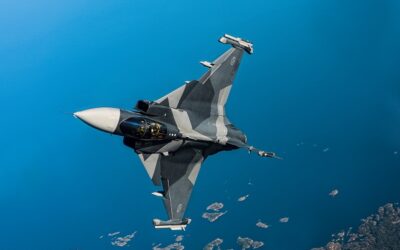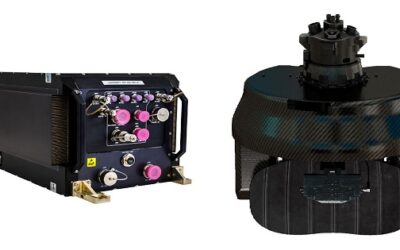Insights on C2BMC
At the Space and Missile Defense Symposium (SMD 2019) in Huntsville, AL this week, MON’s US correspondent Marty Kauchak sat down with Stephen Froelich, Director of Missile Defense Solutions at Lockheed Martin, to discuss the US Missile Defense Agency’s (MDA) Command and Control, Battle Management and Communications (C2BMC) programme.
MON: Please share your perspective of C2BMC System as the integrating element of the US ballistic missile defence system [BMDS].
SF: The ballistic missile defence system is comprised of many elements. C2BMC, as the centerpiece of the BMDS, integrates all sensors and weapon systems to enable a distributed, layered defensive capability. This means that after a missile is launched, C2BMC can alert different defence systems to engage a threat during the different phases of flight – boost, midcourse and terminal. Think of this as similar to a large ‘combat cloud’. From launch, track through engagement, C2BMC provides a global ‘publish and subscribe’ network that allows all of the COCOMs [combat commanders] to see what is critical to them.
MON: You’ve used global and globally in your comments – you are certainly referring to C2BMC as an integrating element across the BMD enterprise and, literally, with US units, staffs and commands around the globe.
SF: C2BMC provides continuous, 24/7 support 365 days a year. The system is deployed at 36 locations around the globe – everything from large command centres at the COCOMs down to smaller user centres, where operators support sensor sites.
MON: As C2BMC is approaching its 15-year commission date, tell us how the MDA-industry team is keeping the system relevant in a rapidly evolving BMD domain.
SF: The team is constantly modernising the system. There are three thrusts for this modernisation. The first is technology, where things move and go faster. You want to take advantage of virtualisation and other capabilities for ‘normal’ advancements. Then there is capability – where we integrate something new into the system. For example, one of the new capabilities we are currently working is the integration of the LRDR [Lockheed Martin’s Long-Range Discrimination Radar] into C2BMC. This is a brand-new capability insertion – different from a technology refresher. While tech refreshers happen with most systems, LRDR inclusion is a capability insertion. The third thrust is adversarial behavior. And while we continue to integrate new capabilities, sometimes what the adversary does will inform decisions through congressional funding. And, to re-emphasize, modernisation in constant. To point, a person starting in the programme today would not recognise what we did 15 years ago. It’s almost been changed out wholesale – it has been modernised throughout. And this isn’t from just adding sensors – this is truly a modern, multi-domain system that integrates all of these sensors. This is all part of that modernisation, which is keeping up with MDA’s planned improvements.
MON: You mentioned LRDR as one new capability, but C2BMC also has a new engage-on-remote capability.
SF: A key component of the EPAA [European Phased Adaptive Approach] is engage-on-remote, which greatly expands the range of AEGIS ballistic missile defence systems. What this means is that the AEGIS weapon system is able to plan, launch and engage, and ultimately intercept without the AEGIS weapon system ever detecting the threat on its organic radar. It’s all done based on remote data provided by C2BMC.
In fact, the capability was successfully tested in December 2018, during Flight Test Integrated-03. During the test, the AEGIS weapon system engaged and intercepted a target based entirely on ground-based radar track and discrimination data provided by C2BMC.
MON: The engage-on-remote capability appears to be a software or internal improvement.
SF: None of the sensors have had to change, all of the sensors that are currently part of the grid. What changed were the mathematical algorithms in C2BMC, which now gleans all the sensor data, then fuses it into a quality of service, to allow that weapon system to engage.
MON: As an increasing number of non-US assets, including AEGIS-equipped combatants, are integrated into the US DoD BMD enterprise, when will US allies and friends become C2BMC subscribers and users?
SF: You are getting into policy, which is not a programme issue. With regard to exporting C2BMC as part of Foreign Military Sales, I would refer you to the MDA.
MON: Can you update us on your C2BMC industry partners?
SF: First, you need to understand the very unique relationship we have with our industry partners. Our main partners are Northrop Grumman, Raytheon, Boeing and General Dynamics. We also have about 22 small, niche companies that fulfill special roles – algorithm development and others. The whole concept we have is a ‘C2 National Team’. We are on a shared destiny where we don’t differentiate anyone’s statement of work. We all work from the same statement of work, we all wear the same set of badges, we all work side-by-side on the same problems. The value proposition for each of these companies, and I am not sounding patriotic, is to simply bring the best of the best onto this programme – yet, there is a competition by all companies. There is a resource control board shared by these companies as well – so, it is not just Lockheed Martin making decisions. For example, all resumés are reviewed against every single job on the programme – there is almost no dispensation away from that process. It is unique and there is also a board of directors – executives from each of the companies – who meet about twice a year to talk about how the programme is progressing. I am also the director of the national team and that is how I advocate.
MON: And some of the highlights in C2BMC’s roadmap for the next 12-24 months, to which MONS readers should pay attention?
SF: The integration of LRDR into C2BMC is one of our biggest near-term milestones. Development is underway with installations planned to begin soon, and scheduled to come on line in the next 12-18 months.
MON: Thank you for taking time to speak with MON and we look forward to remaining updated on C2BMC programme developments.
SF: Thank you for the opportunity.
Marty Kauchak
























